The Netherlands Institute for the Near East (NINO), Leiden, has moved its collection of cuneiform inscriptions to Leiden University Libraries.

The De Liagre Böhl Collection consists of ca. 3,000 clay tablets dating to ca. 2,400–100 BC. This is part of a larger moving operation: NINO and its Near Eastern Library will move into the Herta Mohr Building in June 2024. Part of Leiden University’s Humanities Campus, this newly renovated building is located some 200 meters from NINO’s current location. The Böhl Collection will now be curated by UBL’s Special Collections and remain accessible for academic research and education.
The Böhl Collection is the largest collection of clay tablet in the Netherlands. Its cuneiform texts regularly attract researchers from all over the world. They are also habitually used in Leiden University’s academic courses on the Ancient Near East; Leiden students in Assyriology may learn Akkadian directly from the originals.
NINO’s collection of clay tablets and cuneiform inscriptions was collected in the early twentieth century by Frans de Liagre Böhl, Professor of Assyriology at Leiden University and (together with his colleague in Egyptology) Director of NINO. The ca. 3,000 texts are varied in nature: in addition to administrative texts the collection contains letters, school exercises, royal inscriptions, and literary texts – among the latter, a part of the famous Gilgamesh Epos. The oldest tablet in our collection dates to the 24th century BC, the youngest to the first century BC. Due to its great diversity, the collection provides a unique cross-section of the rich history of the Ancient Near East.
Moving our Böhl Collection to Leiden University Libraries’ Special Collections is the final step in a larger project initiated in 2018: we have worked hard on cataloguing, digitisation, conservation, and professional storage of the collection.
In the years leading up to the move all clay tablets have been checked, stabilised or restored when necessary, and placed in individual open boxes. This specialised work was carried out by Carmen Gütschow from Berlin. A dedicated clay tablet restorer with experience in many different collections and excavations, she is one of very few professionals worldwide to whom this specialised work could be entrusted. At the UBL Special Collections Reading Room the clay tablets can again be accessed upon request.
The complete Böhl Collection has already been digitised by the Cuneiform Digital Library Initiative (CDLI) and will soon be completely available.
Ever since NINO was founded in 1939 there has been a strong collaboration with Leiden University on many fronts. In 2018, the institute has been officially integrated into the Faculty of Humanities. NINO’s Near Eastern Library, internationally renowned for its near-complete collection of scholarly works on the Ancient Near East, is now curated by Leiden University Libraries. It is being integrated in the Middle Eastern Library which will open in the Herta Mohr Building in June 2024. The National Museum of Antiquities, Leiden, is NINO’s partner in the practical care for our Böhl Collection. A few highlights from our Böhl Collection are on permanent display in the museum’s Near Eastern Galleries.
Leiden University website (English and Dutch versions): Clay tablets dating back thousands of years moved: ‘From receipts to the oldest literary works’ (27 February 2024).
Leidsch Dagblad (in Dutch; paid access): Duizenden jaren oude kleitabletten van Nederlands Instituut voor Nabije Oosten hebben nieuw onderkomen in Leidse UB. ’Ik ga de tabletjes wel missen, hoor’ (26 February 2024).
Omroep West (in Dutch): Al sinds 2017 bezig met verhuizing over 50 meter, maar het is gelukt (2 March 2024).
